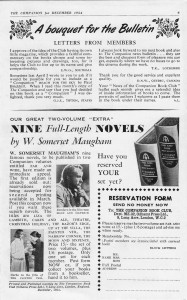Posted: February 28th, 2014 | No Comments »
Andrew Field’s Mu Shiying: China’s Lost Modernist is the third book (see Anne Witchard’s Lao She in London and Lindsey Shen’s Knowledge is Pleasure: Florence Ayscough in Shanghai were books 1 & 2) is now available for pre-order on Amazon and will be available in Asia this March. Andrew is also speaking at the Beijing, Shanghai and Suzhou Literary Festivals – details of the book and the China tour below….
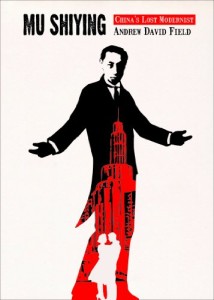
When the avant-garde writer Mu Shiying was assassinated in 1940, China lost one of its greatest modernist writers while Shanghai lost its most detailed chronicler of its demi-monde nightlife. As Andrew David Field argues, Mu Shiying advanced modern Chinese writing beyond the vernacular expression of May 4 giants Lu Xun and Lao She to even more starkly reveal the alienation of the cosmopolitan-capitalist city of Shanghai, trapped between the forces of civilization and barbarism. Each of these five short stories focuses on the author’s key obsessions: the pleasurable yet anxiety-ridden social and sexual relationships of the modern city and the decadent maelstrom of consumption and leisure in Shanghai epitomized by the dance hall and the nightclub. This study places his writings squarely within the framework of Shanghai’s social and cultural nightscapes.
SUN MARCH 9, 12 noon to 2 pm @ Bookworm Literary Festival, Beijing Bookworm
WED MARCH 12, 12 noon to 2 pm @ Shanghai Literary Festival, M on the Bund
SUN MARCH 16, 4 pm to 6 pm @ Bookworm Literary Festival, Suzhou Bookworm
THURS APRIL 3, 7 pm to 9 pm @ Wooden Box Cafe, Shanghai
Posted: February 27th, 2014 | No Comments »
He Jiahong, author of Hanging Devils (on amazon.co.uk at a bargain price here), has just published a new Penguin Special and it’s a true crime from the 1990s – Back From the Dead; A Landmark Ruling of Wrongful Conviction in China. Sounds fascinating and he’s doing an event for the Bookworm International Literary Festival this March 2nd – see below

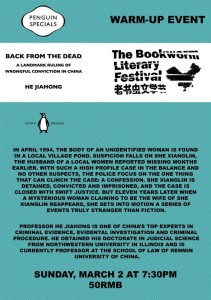
Posted: February 27th, 2014 | 4 Comments »
My thanks to publisher and Hong Kong heritage maven Pete Spurrier (and author of the bestselling Heritage Hiker’s Guide to Hong Kong) for these pictures of Hing Hon Road up in Pokfulam – as it used to look. Having strolled up (sweated and grunted more like!) from Central to Pokfulam to visit Hong Kong University many times I know this area well. Interestingly I recently came across an online pdf (click here) from Kerry Properties (a company that has done much to trash heritage in Hong Kong, Shanghai and Beijing in the last few decades) describing the area around Hing Hon Road as “a timeless neighbourhood”, “tranquil” and with “treasured heritage”. Kerry have helped preserve this timelessness, tranquility and treasured heritage (which includes St. Paul’s College, King’s College and the old quads of HKU) by ripping down the street and putting up two gigantic and ferociously ugly tower blocks called (who knows why) The Summa (see below)! Goodbye sunlight, views, perspectives and heritage. Thanks Kerry. Most of Hing Hon Road was built around 1916 so just failed to make its centenary. A real tragedy.




and now…

Posted: February 26th, 2014 | 12 Comments »
Marjorie Hessell Tiltman was the wife of Hugh Hessell Tiltman, a well known journalist in 1930s China. I covered him briefly in my book Through the Looking Glass, a history of foreign correspodnents in China – ‘Reporting from Manchuria in the early 1930s was not without its hazards. Hessell Tiltman, a British journalist for the London Daily News and three-time president of the Tokyo Foreign Correspondents’ Club, became well known for covering Japan’s latest outposts as its expansionist policy advanced. He was arrested by the Japanese secret police, the Kempeitai, in Manchuria for spying and bizarrely charged with “taking a photograph without a cameraâ€, an accusation neither the journalist nor anyone else seemed to really understand. However absurd a charge, the Japanese were probably right to watch Hessell Tiltman as he probably was a spy, at least part-time. In 1934 he published his take on the Manchurian annexation in association with Colonel P. T. Etherton in their book Manchuria: The Cockpit of Asia. Etherton had been British consul-general in Kashgar between 1918 and 1922 where his major task had been to thwart Bolshevik expansion into either British India or Chinese Turkestan. After that he had been involved in various Balkan machinations before travelling to Manchuria. It is hard to imagine that Hessell Tiltman was not aware of who Etherton was and could not look at the “diplomatic†roles he had undertaken and add two and two together to get “spyâ€.’
Anyway, this post is about his wife, Marjorie. After leaving China it seems the Hessell Tiltman’s settled in West Sussex and Marjorie wrote a delightful book about life in their cottage and village in the late 1930s just before the war, Cottage Pie. I came across a copy the other day while sorting out my father’s book collection – he had no idea how she linked to China. She also wrote on China, including a novel entitled Master Sarah about the opium wars. Still, life in Sussex seemed to please her most…..
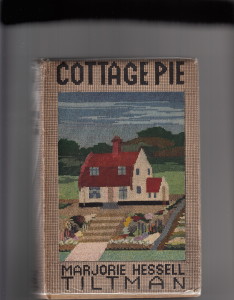
Posted: February 25th, 2014 | No Comments »
Edward Theodore Chalmers Werner’s Myths and Legends of China is a classic and now reissued as a kindle. Of course ETC Werner was the diplomat-scholar father of Pamela Werner and features heavily in my book Midnight in Peking. However, I’ve been amazed going round talking about that book at how many older China hands know Werner’s work well and how his book is still seen as a major text in this field, despite being published in the 1920s. Here by all manner of creatures fabulous and mythological and the tales that spawned them – including those pesky fox spirits….
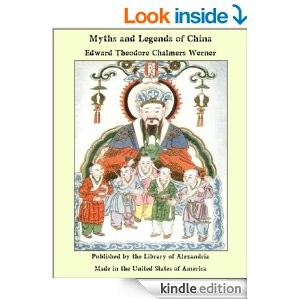
The chief literary sources of Chinese myths are the Li tai shên hsien t’ung chien, in thirty-two volumes, the Shên hsien lieh chuan, in eight volumes, the Fêng shên yen i, in eight volumes, and the Sou shên chi, in ten volumes. In writing the following pages I have translated or paraphrased largely from these works. I have also consulted and at times quoted from the excellent volumes on Chinese Superstitions by Père Henri Doré, comprised in the valuable series Variétés Sinologiques, published by the Catholic Mission Press at Shanghai. The native works contained in the SsŠK’u Ch’üan Shu, one of the few public libraries in Peking, have proved useful for purposes of reference. My heartiest thanks are due to my good friend Mr Mu Hsüeh-hsün, a scholar of wide learning and generous disposition, for having kindly allowed me to use his very large and useful library of Chinese books. The late Dr G.E. Morrison also, until he sold it to a Japanese baron, was good enough to let me consult his extensive collection of foreign works relating to China whenever I wished, but owing to the fact that so very little work has been done in Chinese mythology by Western writers I found it better in dealing with this subject to go direct to the original Chinese texts. I am indebted to Professor H.A. Giles, and to his publishers, Messrs Kelly and Walsh, Shanghai, for permission to reprint from Strange Stories from a Chinese Studio the fox legends given in Chapter XV.
Posted: February 24th, 2014 | No Comments »
The Jesuit-educated Francois-Marie Arouet, better known as Voltaire (1694 1778), read all the travel literature about China he could find, mostly the Jesuit reports, and reputedly kept a picture of Confucius on his library wall. The rationality he perceived in China appealed to him immensely. Voltaire rewrote the Chinese classic Orphan of the Zhao Family as L’Orphelin de la Chine after he declared that the original story revealed how reason and intellect inevitably triumph over ignorance and barbarity. The Comedie Francaise published the five act play in 1755 and also perofrmed the play for the first time there in August of that year. Of course Voltaire was commenting on the Enlightenment and the Catholic Church more than China. In the play the oraphan, who is in fact the royal heir, is entrusted to an official Voltaire named Zamti. Here then is the Comedie Francaise’s Zamti from 1755…..

Posted: February 23rd, 2014 | No Comments »
 The photographer Carl Van Vechten is very much in the air again at the moment thanks to a new biography The Tastemaker: Carl Van Vechten and the Birth of Modern America by Edward White. Van Vechten, a man who knew just about everyone and mixed in cosmopolitan, multi-racial Bohemian circles in the inter-war years, is long overdue a major bio. Van Vechten was a great champion of people that interested him (Gertrude Stein, Bessie Smith, Langston Hughes, Chester Himes etc) and an inveterate salon attendee. As a photographer he shot pretty much anyone who was anyone in New York. Of course Van Vechten took some pictures of well known and celebrity Chinese at the time – most famously he took a clutch of pictures of Anna May Wong (several below), Mai Mai Sze (the artist daughter of the Chinese diplomat Alfred Sze – see my post on her here) and China’s great man of letters and style Lin Yutang….
The photographer Carl Van Vechten is very much in the air again at the moment thanks to a new biography The Tastemaker: Carl Van Vechten and the Birth of Modern America by Edward White. Van Vechten, a man who knew just about everyone and mixed in cosmopolitan, multi-racial Bohemian circles in the inter-war years, is long overdue a major bio. Van Vechten was a great champion of people that interested him (Gertrude Stein, Bessie Smith, Langston Hughes, Chester Himes etc) and an inveterate salon attendee. As a photographer he shot pretty much anyone who was anyone in New York. Of course Van Vechten took some pictures of well known and celebrity Chinese at the time – most famously he took a clutch of pictures of Anna May Wong (several below), Mai Mai Sze (the artist daughter of the Chinese diplomat Alfred Sze – see my post on her here) and China’s great man of letters and style Lin Yutang….
 Anna May Wong as Turandot in 1937
Anna May Wong as Turandot in 1937
  and Anna May Wong again
and Anna May Wong again

And Anna May Wong in what became a quite scandalous androgynous portrait from 1932
 Mai Mai Sze
Mai Mai Sze
 Lin Yutang
Lin Yutang
Posted: February 22nd, 2014 | No Comments »
The Companion Book Club (a major British book club at the time) decided to republish a series of W Somerset Maugham’s novels in 1954. Of course his classic novel of Hong Kong and China, The Painted Veil, was included as was a still of Garbo playing Katrin in the 1934 film version….
